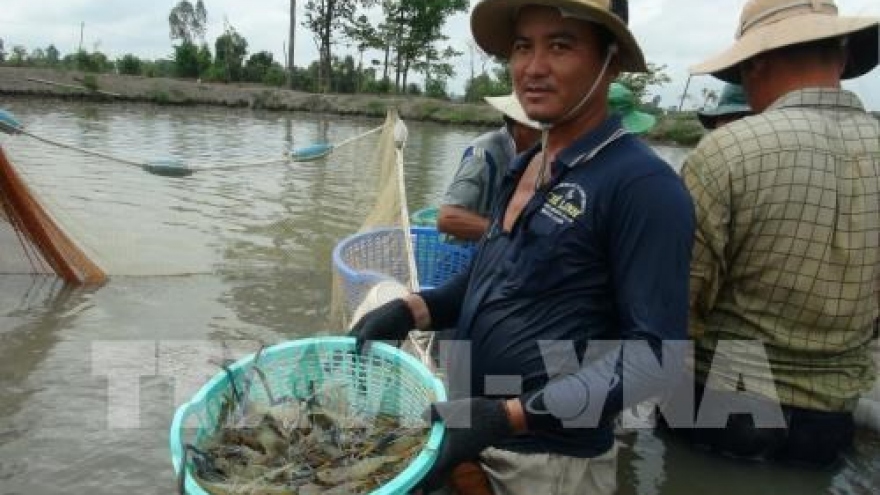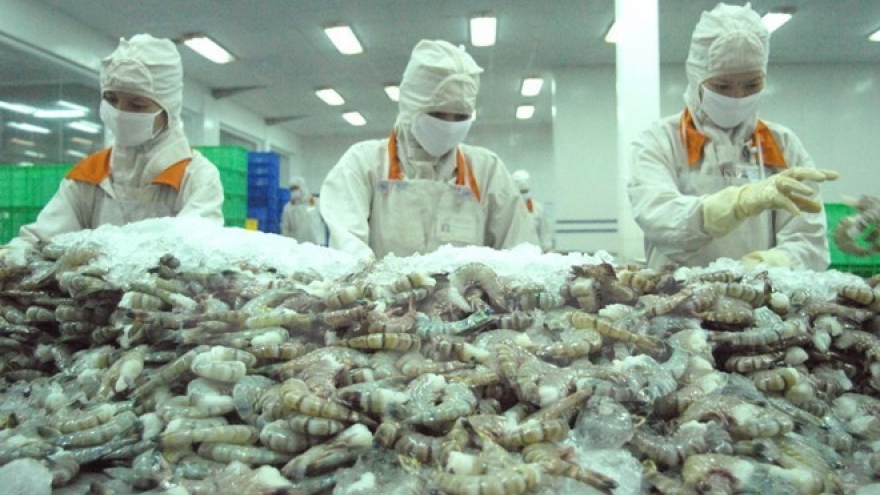Over the course of the same breeding period, the new technique brings about higher shrimp productivity and quality than the traditional method.
By the end of 2015, after studying shrimp breeding models nationwide, Tan decided to renovate his farm by building a green house and spreading out a layer of canvas at the bottom of the pond.
Tan said that the high-tech shrimp farming model requires breeders to build a pond with an appropriate area (2ha), as well as additional ponds assisting the main one.
Several years ago, the shrimp he raised in the traditional pond yielded low productivity as the shrimps were affected by unfavourable weather conditions and attacked by diseases. Now he uses probiotics instead of antibiotics so that shrimps have better resistance against diseases and are of a better quality.
The biggest advantage of high-tech shrimp farming is a closed breeding process, he said, adding that breeders can control the breeding environment so that they can prevent disease risks since shrimps are released to the pond until they are grown up.
“I can release only 50-70 shrimp per sq.m to a traditional pond but up to 150-200 shrimp per sq.m to a high-tech pond. The risk of death stays very low. Each kg has 40-50 shrimps,” Tan said.
Thanks to new technology, Tan is able to cut down on production spending. He built a separate water treatment area covering the same area as the breeding pond (2ha).
On the same area, his model helps save money compared to other models, including saving water thanks to the water treatment system which helps improve biological safety and reduces energy costs thanks to a special air pumping system.
With the traditional method, breeders have to feed shrimps. Tan uses an automatic shrimp feeding machine which helps prevent food being wasted in the water and reduces labour. Shrimps fed by this method also grow faster.
Last year, after three seasons, he harvested 50 tonnes of shrimp products worth over VND8 billion (US$348,000). The total profit gained was estimated at more than VND3 billion (US$130,500).
Tan said that he would multiply the high-tech shrimp farming model and apply additional technologies to his farm.
The high-tech shrimp breeding model requires big investment but brings about high profits, controls diseases and addresses environmental problems.
Its production is really sustainable, said Nguyen Tien Thanh, Standing Deputy Secretary of the Party Committee of Ninh Binh province. He encouraged local shrimp breeders to switch to high-tech farming for higher profits.



